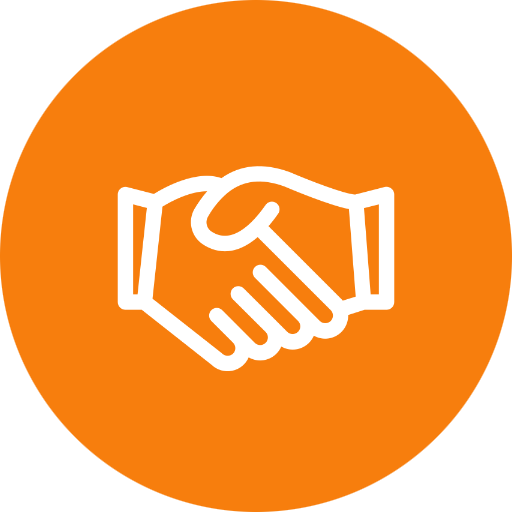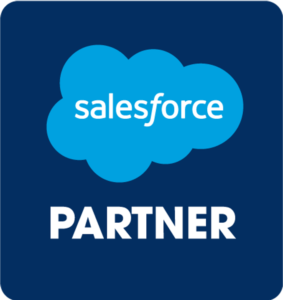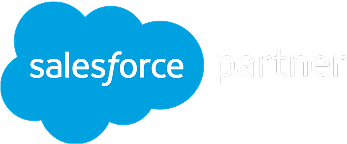- Solutions
- Customer Onboarding
- Customer Success
- Professional Services Automation
- Project Management
- Project Portfolio Management
-
Solutions
-
Features
- Why Cloud Coach
- Customers
-
Resources
ON-DEMAND WEBINAR
3 PPM Features That Customers Love
Join Bri Snook, Product Manager, Cloud Coach, and Nic Widhalm, VP Customer and Partner Success, Cloud Coach as they demonstrate the three features for project portfolio management on Salesforce that Cloud Cloud customers can’t get enough of!
Transcription
-
BRI SNOOKHey everyone, thanks for joining. We're going to run through our top three PPM features that customers at Cloud Coach, and with me today, we have stolen a little time away from Nic Widhalm, who is our Vice President of Customer and Partner Success. And then myself, my name is Brianna Snook, and I am a Product Manager. Nic, do you want to say hello?
-
NIC WIDHALM:Hi everybody. Yeah, I'm super excited. Bri. I think we got some great stuff to go over here. I love PPM. I love hearing from our customers who love PPM. So yeah, let's jump right into it.
-
BRI SNOOKAwesome. Yeah. So the first one that we want to go over is our Stage Gates. So some of the top questions that we get asked about our Stage Gates, just in general, what they are, how do I demonstrate progress towards a Stage Gate without a project plan? And how do I see them across multiple project plans? So maybe Nic if you don't mind giving us a little information on all three of these points here.
-
NIC WIDHALM:Yeah, absolutely. I think one of the reasons that our customers really love Stage Gates and Cloud Coach is because the Stage Gate methodology is something that allows clients to go through a project and determine at different stages, whether or not they want to move forward with the project, whether they just want to kill it, don't put any more spend against it, whether they want to recycle it, change up some of the things, continue to move forward, put it on hold, skip over certain stages or just continue to move forward. So it really gives a nice way that they can make sure that their investment as they go forward with this project is still on track. And one of the great things about Cloud Coach is that we have these Stage Gates right here within a project.
-
NIC WIDHALM:So I'm here on my tech build implementation project, in my overview section, and when I look at my Stage Gates, I can see a list of the Stage Gates that we have here directly on this project. This is a project that doesn't have a project plan yet. So it's still in the infant stages. Then you can see, as we move through each of these gates, we're able to put specific pieces of data around them. So no longer are we just doing this on a spreadsheet or a piece of no paper or anything like that. We're able to kind of capture all of this information here, and this is configurable. One of the great things about us being built on Salesforce as a platform is that we can really take these kinds of Stage Gate processes and update them and change up what field information we need into them. We can also click into them and open up even more information.
-
NIC WIDHALM:So that second bullet point you asked, Bri, I think is a really good one to talk through because if I don't have a project plan, but I want to show progress against the Stage Gate, I need a way to do that. And that's where this side panel comes into play. As I click down through these different gates, you can see, we can set up these different checklist items. So this is a way that I can say, hey, before I even have a project plan, I know that there are things that need to get done on these Stage Gates, and it may be just completely independent from a project manager who has a project plan, or again, maybe there is no project plan here yet.
-
NIC WIDHALM:So as I go through and I check off these items, I can drive that completion percent right here. You can see that change up to 80. I can visualize this here at the top of the project, and this visualization is pulling in the status. So right up here, this is letting me say, Hey, anything there in green, that means we went ahead through that Stage Gate, there recycle, you can see the little icon there. That's showing me that we moved forward, we made the change. We can skip them if we want to. If we don't have a status, but we have a due date, you can see here, I can immediately see, hey, we're 80% complete on the Stage Gate, but we're a little bit behind schedule. So I get that immediate kind of visualization, and then I can take this, and I'm looking at one particular project here, but let's say I'm a portfolio manager. I have a whole bunch of different projects. I need to know where my Stage Gates are.
-
NIC WIDHALM:This is one of my personal favorite features. I click here and I can go take a look at different organizations of my projects, so let's say I want to take a look at my strategic projects. Not only can I jump back and forth between just kind of clicking them here and see my Stage Gates change like that. But if I go to my cross project view, from here, I can see things like my overall Stage Gates across these different projects. So these are all different projects here with different gates. Here, this shows me which gate process we're going through because you have different gates depending on the kind of process you want to run through. If it's an IT gate, this is a pretty common gate process, and then I can immediately see what's going on with these projects.
-
NIC WIDHALM:I can click open, I can see more top level details there, and then I could of course, drill down back into that project just by kind of clicking back into it, going into Stage Gate. So it's a really nice way that you can jump back and forth, see that information, visualize it across multiple products.
-
BRI SNOOKThat's awesome. Yeah, that last view that you're on just one of my favorite views with the Stage Gate. I like all the colors and little symbols that we're able to display there.
-
NIC WIDHALM:Absolutely.
-
BRI SNOOKSo thank you for displaying that, I love that. So the second one that we wanted to cover today was our portfolios and programs. So some of the key questions that we do get asked about this is kind of to know what the difference between a program versus a portfolio so that you can properly use both of them. To understand how the link between your projects, programs, portfolios, how that all works, and then identifying demand against portfolios. So just showing the different ways within Cloud Coach that we can do that. So, Nic, do you want to-
-
NIC WIDHALM:Yeah, absolutely. I think when we talk through things like PPM, and I'm going to go ahead and switch to another tab here, this is our PPM app. And what we're talking about with PPM are of course, portfolios, programs, projects, and it really gets down to how we want to set up that hierarchy. And one of the things that people really love about Cloud Coach when we talk with them about PPM is that you can have portfolios, you can have programs, you can have strategic goals, you can have business units, and it's really up to you to kind of, if you want to have that full structure where it goes portfolio, then a program under, portfolio then a project under it, or if you just want to have a portfolio level with projects linked up directly to it. Again, one of those customizable areas that is really great on the Salesforce platform.
-
NIC WIDHALM:And from within this view, it's really easy to kind of switch back and forth between them. I can see all my programs here. I can see all my portfolios here. I could see my business units. I could see my strategic goals. And then just like you saw before in the last screen, if I want to get more information, I can dive down directly into any of these. So if I wanted to say, hey, I want to go down into the summary view here of this particular portfolio. I can click directly into this. This shows me more portfolio information, and then I can jump back and forth between my portfolios. So as I click down through these different views, I can see my top level portfolio information.
-
NIC WIDHALM:So what, again, our customers really love here is that this allows the portfolio manager, not only to get that specific portfolio information, but it also allows them here to create their own views. So you can group portfolios by certain criteria and you can switch on the fly between different areas. I can also go right here now into programs. So now I can see all my programs viewed a certain way. If I'm a program manager versus a portfolio manager, I get to have my own views, same thing with my business units. I can kind of see all of that information here within my business units, strategic goals. I can view it that way as well. And not only can I see my top level information here on a portfolio, but if I go to this timeline section, I can see all my projects that are linked to that portfolio. So this is the way I can see all of that project information. I could see the Stage Gates as we just saw before, my milestone, my project list, kind of all of that information there. And again, I can just kind of click down through these different projects, go back and forth.
-
NIC WIDHALM:And again, one of my favorite things is that as we go through our portfolios here, we're going through a status report and I'm saying, okay, where are our Stage Gates at? I can click into these different portfolios and I can say, hey, look, these are my projects with Stage Gates that are using this particular process, these are the ones using this particular process, these are what my milestones look like. Again, across different sorts of milestone processes. Here's what my customer, my project health looks like across this particular portfolio, and I can just kind of click down the line just like that. And then as the man comes in, I can visualize it here within this timeline section and action on it as well. So I get all of that here within this PPM app that allows me to kind of, again, jump back and forth between all of this information quickly, easily, visualize it and action on it when I need to.
-
BRI SNOOKThat's great. Yeah. Thank you for covering that. I love the different colors that as you flip between portfolios and programs, it's kind of a nice visualization of what area that you're on.
-
NIC WIDHALM:Absolutely.
-
BRI SNOOKAnd then the last thing that we wanted to cover was the reporting and dashboards for PPM. So some common questions that we get, so on demand reporting, what does that look like at the PPM level? How are we able to visualize those reports at the portfolio level? And then how can we utilize advanced analytics to capture and surface PPM data?
-
NIC WIDHALM:Yeah, yeah. Reporting is one of just the very best features about Cloud Coach, because since we are built on that Salesforce platform, it means we get to utilize the great Salesforce reporting areas that we have here. So this reporting engine that we're looking at allows us to grab all of that PPM level data, whether it's portfolio, whether it's gate status, whether it's demand, KPIs, program health, charters, all of that can kind of get pulled back here into a dashboard, utilizing that Salesforce reporting engine, and this dashboard is all on demand. You press refresh or you schedule it or you subscribe to it. So it shows up in your email on a certain cadence it's right there. So I know exactly where my portfolios are at any given moment. And one of my favorite things here is I can dive down into any of these underlying reports and look at things like more in depth portfolio management. I can click directly into a portfolio if I just want to keep diving down from there.
-
NIC WIDHALM:So it's a great way to take all that PPM level data, kind of pull that up here and utilizing this particular Salesforce dashboard, it has great features within it like that on demand data that we just talked about, but we can also extend this even more by using the more advanced analytics options within Salesforce, like Tableau CRM. Over here, we can take all of that portfolio, PPM, demand, all of that great data, and we can pull it into a more advanced analytics dashboard. So here by using Tableau CRM on Salesforce, I'm taking all of that great data. And now I can do things like have these cross filters where I can go dive down into a particular portfolio and see where my demand investment is at, or my project costs are looking.
-
NIC WIDHALM:I can also go and I can just filter this particular dashboard as I click into different areas. So I can say, hey, this piece of demand that's coming in, what does that look like? What are the projects associated with it? What is the portfolio information that we look against it? And you can see along the top here, that as we click into different areas, everything within this dashboard kind of all pulls that together. So it's a great way to unify all of this data, using those advanced analytics. And then finally, whether we're using the advanced analytics, like we see here or something like the more traditional Salesforce reports, we can pull that back into this PPM app. So this app that we just looked at a moment ago where we could jump through our different portfolio pieces, one of the great things is we can extend this with custom reporting.
-
NIC WIDHALM:So when I want to look at the dashboard for this particular portfolio, I could pull in these dashboards and I can filter this data to be specific to this particular portfolio. So now as I click down the line here, I can go into these different portfolios, see that data, see it change, have it be specific right there to the particular portfolio I'm looking at, and I can pull that same dashboard that we looked at with analytics directly in here as well. So again, I can either have all of our portfolios and investments, or we can have this filtered to be this specific portfolio so that no matter which style of reporting you want to use, you get to pull all of that into that portfolio view, your portfolio managers can then go down their portfolios, see that information change, or again, they can flip over to something like a program, and that program is also going to have the option of pulling dashboards and analytics as well as business units in strategic goals.
-
NIC WIDHALM:So not only do you have kind of these more static reports, but you can pull them into that really active view. And the portfolio managers love it. It allows them to really expand on where their portfolio information is coming in, where they need to dive down into where they can find their cap ex spend their op ex spend all of those different features there.
-
BRI SNOOKThat's awesome. Yeah, I couldn't say it better myself. I liked how you were able to kind of utilize all that Salesforce has to offer and kind of give the option for whatever data they'd like to see and how they'd like to report on it. So thanks for showing that. I appreciate it.
-
NIC WIDHALM:Absolutely.
-
BRI SNOOKThat kind of wraps up the three things that we really wanted to cover for PPM customers and what they really love to use within our PPM app. But if there's any questions or if you'd like to learn more, please feel free to reach out at sales@ cloudcoach.com. We really appreciate you taking the time and you too, Nic, thank you for hopping on. I appreciate it.
-
NIC WIDHALM:Thanks, Bri. I appreciate it. Take care everybody.
In this webinar you’ll learn
- What stage gates are and how to use them across multiple project plans
- The difference between a program and a portfolio and when to use each
- How to utilize advanced analytics to capture and surface PPM data
Speakers
-
 Bri SnookProduct Manager, Cloud Coach
Bri SnookProduct Manager, Cloud Coach -
Nic WidhalmVP, Customer and Partner Success, Cloud Coach






















